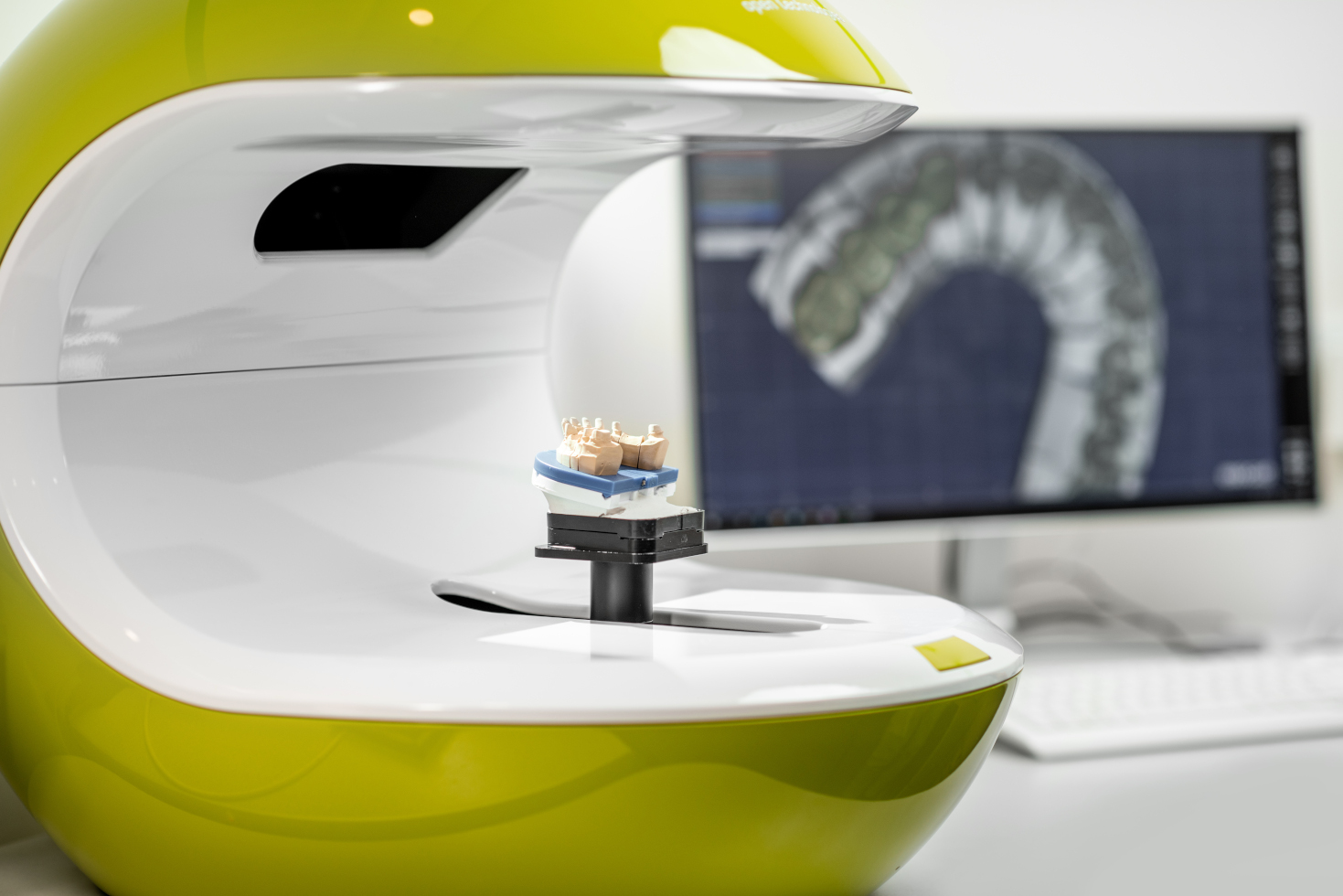3D printing has been used in many industries for more than 30 years, and the use of 3D printing is a cornerstone of modern dentistry with the integration with digital scanning and CAD/CAM systems, highlighting its profound impact on the fabrication of custom dental appliances and prosthetics, revolutionizing patient care and enhancing clinical outcomes.
Digital scanning in dentistry, employing advanced optical technology, captures precise intraoral images, revolutionizing traditional impression methods. This shift enhances accuracy and precision, ensuring optimal fit and function of dental restorations. It significantly elevates patient comfort by eliminating the need for cumbersome physical molds, while also streamlining treatment timelines. The applications of this technology span across various dental specialties, including orthodontics for aligner fabrication, restorative dentistry in creating crowns and veneers, and implantology for accurate placement and prosthesis design. Embracing digital scanning is pivotal for modern dental practices aiming to improve treatment outcomes and patient experiences.
CAD/CAM technology represents a monumental shift in dental prosthetics, integrating computer-aided design and manufacturing to transform patient care. This system streamlines the workflow from digital impressions to final restorations, enabling unprecedented design customization and a wide selection of materials, thereby optimizing both aesthetic and functional outcomes. Dental practices benefit significantly from the adoption of CAD/CAM, gaining the ability to fabricate restorations in-house, which not only enhances efficiency but also allows for rapid, precise, and patient-specific dental solutions. This innovation ensures superior quality prosthetics while reducing turnaround times, embodying a major advancement in dental technology.
The advent of 3D printing in dental practices marks a significant technological leap, offering unparalleled precision in fabricating a variety of dental applications. This innovative technology supports a wide array of materials, enabling the creation of surgical guides, detailed dental models, custom trays, and prosthetics like dentures, crowns, and bridges. Its impact on dentistry is profound, significantly enhancing treatment efficiency and enabling the delivery of patient-specific solutions with unprecedented accuracy. By incorporating 3D printing, dental professionals can achieve superior fit, function, and aesthetics in their restorative work, custom-tailored to meet individual patient needs.
Integrating digital technologies like 3D printing, CAD/CAM, and digital scanning streamlines dental workflows, significantly enhancing treatment outcomes and operational efficiency. A compelling case study in this realm illustrates a dental practice that seamlessly combined these technologies, resulting in a streamlined process from diagnosis to final restoration. This synergy not only expedited the treatment process but also fostered a higher level of collaboration between dental team members and external laboratories. Such integration ensures precision, customizes patient care, and optimizes the use of clinical time, setting a new standard for excellence in modern dentistry.
Overcoming the challenges of cost, training, and adaptation is crucial for harnessing 3D printing’s full potential in dentistry. While initial expenses and the learning curve can be significant, strategic investments in education and technology can yield substantial long-term benefits. The future of digital dentistry and 3D printing promises transformative advancements, with ongoing innovations enhancing precision, speed, and material variety. Anticipated developments include bio-compatible materials for direct implant printing and AI-integrated diagnostic tools, promising unprecedented improvements in personalized dental care, procedural efficiency, and the scope of treatments possible within the dental practice.
The transformative impact of digital dentistry and 3D printing is reshaping the landscape of dental care, offering unprecedented precision, efficiency, and customization. These technologies are pivotal in defining the future of dentistry, promising enhanced patient outcomes and practice growth. Dental professionals are encouraged to embrace these innovations, leveraging their potential to revolutionize both the art and science of dentistry.





